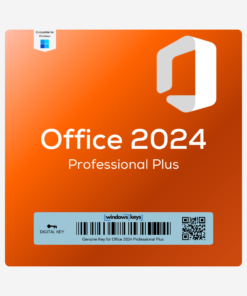-
×
 Office 2024 Professional Plus Key LTSC
1 × £19.99
Office 2024 Professional Plus Key LTSC
1 × £19.99
Windows
Open Pages Files on Windows 10: A Free and Simple Guide
When it comes to crafting documents, Pages — Apple’s proprietary word processing tool — is a go-to option for those on macOS or iOS. However, things get a bit challenging when you receive a file generated in Pages and you’re using a Windows operating system. But fret not; even without a Mac at your disposal, you can easily open Pages files on Windows 10. This comprehensive guide drives you through two foolproof, free methods to accomplish that.
Method 1: Using iCloud
One effective way to open Pages files on Windows 10 is via iCloud. iCloud packs a free, cloud-based version of the Pages app, which you can access in a browser. Below is a step-by-step guide on accessing Pages files using iCloud:
- Create an Apple ID: If you’re not currently an Apple user, all you’ll need first is an Apple ID. You can create one free on Apple’s Apple ID page.
- Sign in to iCloud: Access iCloud using your newly-created (or existing) Apple ID. This opens up a realm of Apple’s cloud services, available to you on any platform.
- Navigate to Pages: On your iCloud dashboard, click on the “Pages” icon. This will effectively launch the Pages app in your browser window.
- Upload the Pages file: At the top of the screen, look for the gear icon. This represents settings. Clicking it will provide an ‘Upload Document’ option. Select this option to navigate to your desired Pages document from your PC.
- Open your file: After uploading, the Pages file will appear in iCloud Pages’ comprehensive list of documents — ready for your viewing pleasure. Double click on the file in this list to open it.
- View and Edit in a browser: One major advantage of this cloud-based solution is that you can view and edit your document directly in your browser window. Your changes are even saved automatically!
- Download in a desired format: If you wish to download the document in a format that Microsoft Word can accommodate, navigate the menu as follows: ‘File>’ ‘Download a Copy>’, and finally select ‘Word’. This will download the document in .docx format, which Word can handle.
Method 2: The Google Docs Route
Another free option for accessing Pages files on Windows is Google Docs, a feature-rich, web-based word processor. The process is easy and intuitive. Follow the steps below:
- Sign in to Google Drive: Log into your Google account and proceed to Google Drive. If you don’t have a Google account, creating one is free and easy.
- Ready the upload: On the left-hand side menu of your Google Drive, you’ll see a ‘+ New’ button. Clicking on this will provide a dropdown menu with a ‘File Upload’ option.
- Upload the Pages file: Clicking on ‘File Upload’ let you navigate to and select the Pages document stored on your PC.
- Open the file: The Pages file will appear in Google Drive after the successful upload. Double clicking this file will open it in ‘Preview’ mode.
- Edit with Google Docs: The ‘Preview’ mode provides options at the top of the window. One of these is ‘Open with Google Docs’ — a simple, one-click solution to open your Pages file in Google Docs.
- Transform your document: Now that the file is open in Google Docs, you’re free to view and edit as needed. Google’s intuitive interface and host of editing tools are at your disposal. Like iCloud, any changes you make are saved in real time.
- Download in Microsoft Word format: After finishing your edits, you may want to save the document in a more universally-friendly format. Google Docs allows you to download your newly edited document as a Microsoft Word file, under the ‘File’ > ‘Download’ > ‘Microsoft Word (.docx)’ pathway.
By following these steps, working with Pages files becomes a breeze — even on Windows 10. iCloud and Google Docs are both excellent, free, and easy-to-use tools. So even if you find yourself handling Pages files often, you’ve got simple, zero-cost solutions at your fingertips. Not only can you open Pages files on Windows 10, but these methods also support viewing and editing, offering you a seamless experience over different platforms. Now, the .pages file extension doesn’t have to be a stumbling block — you’re equipped to handle it with confidence.
